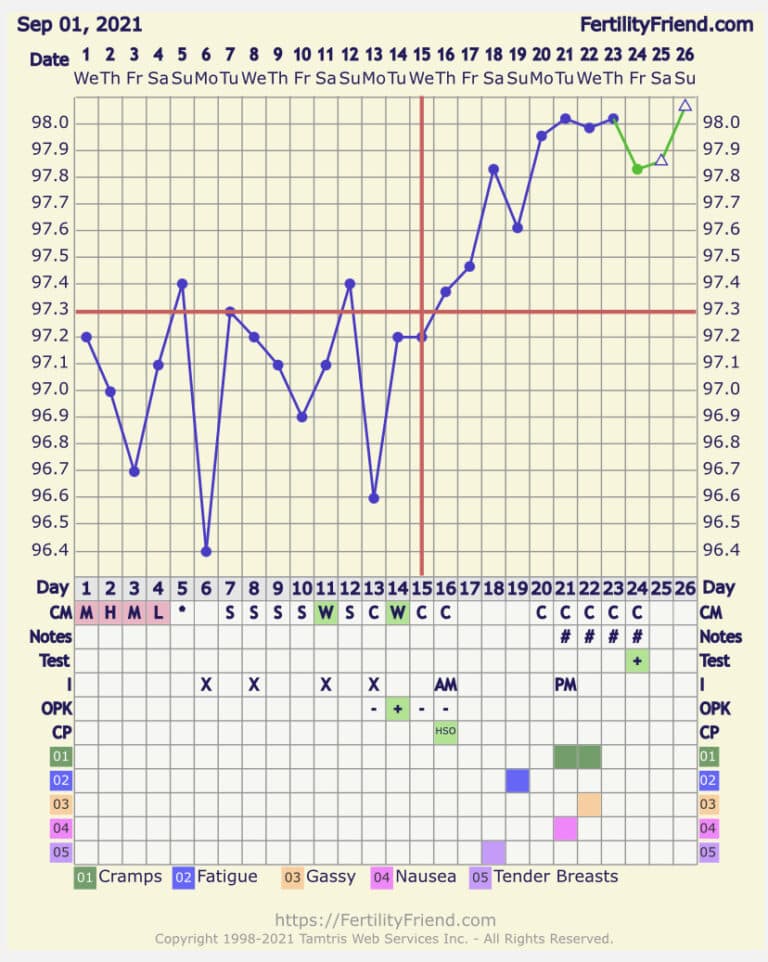Luteal Phase Symptoms: All You Need to Know
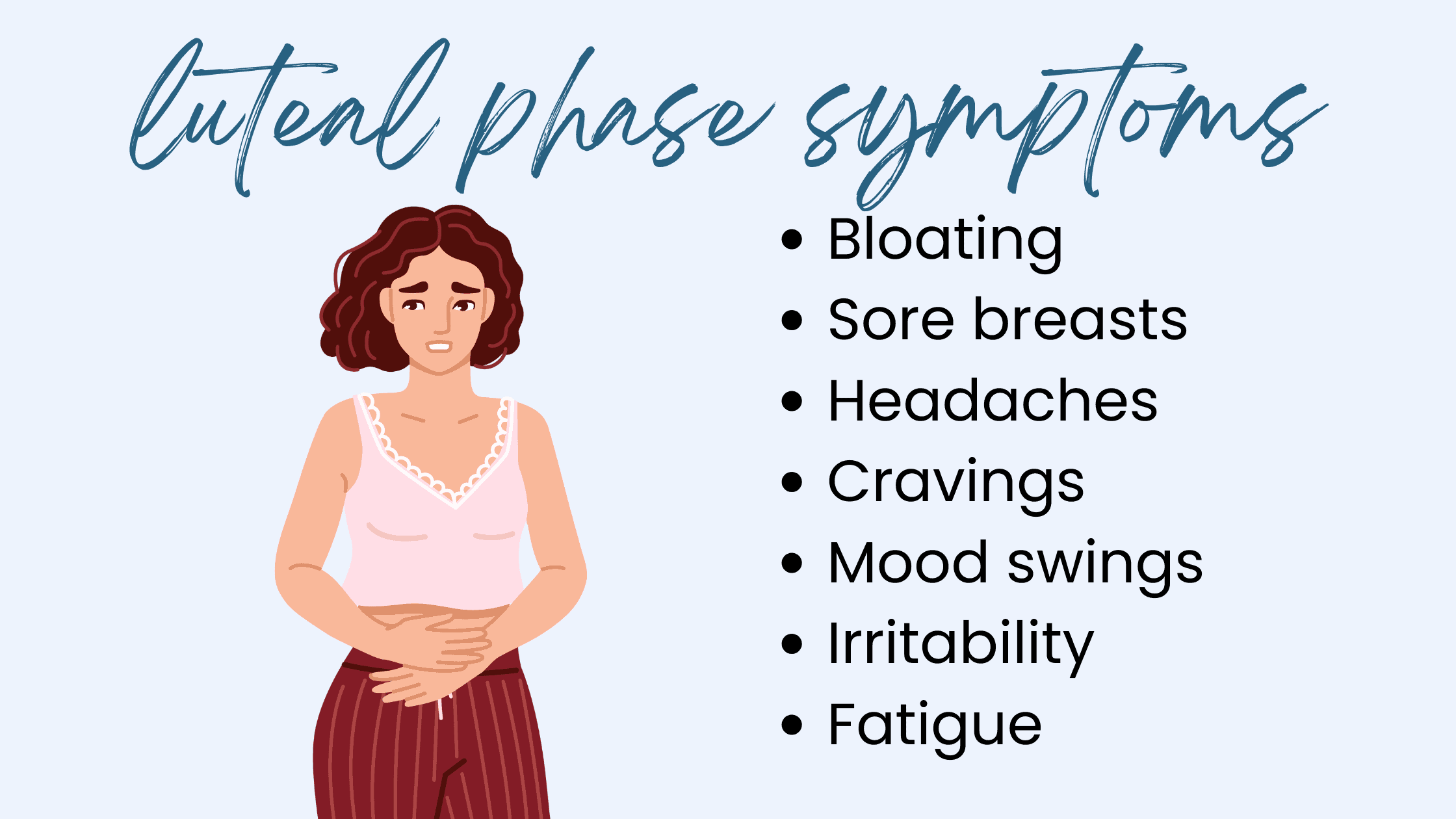
Last Updated on September 30, 2023 by Avi Steen
Have you ever noticed mood swings, bloating, or breast tenderness during the second half of your menstrual cycle? These are all luteal phase symptoms, a critical time in a woman’s cycle that plays a significant role in fertility and overall health.
In this blog post, we’ll explore the ins and outs of the luteal phase, from understanding its importance to managing its symptoms and everything in between. As a nurse and fertility doula, I want you to know and learn how to master your menstrual cycles!
Key Takeaways
- Understand the luteal phase and its role in fertility & early pregnancy detection.
- Common symptoms include physical & emotional changes, which you can manage through lifestyle changes and treatment options.
- Track your cycle to identify underlying issues or detect early signs of pregnancy for timely care.
Understanding the Luteal Phase
The luteal phase is the second half of the menstrual cycle, preparing the body for pregnancy by thickening the uterine lining and maintaining hormone levels. It usually lasts from the day after ovulation until the day before your menstrual period starts, with an average length of about 14 days.
However, some women may experience a short luteal phase, which might not give the uterus lining enough time to build up for a fertilized egg to implant.
On the other hand, a luteal phase lasting longer than 14 days could mean possible hormone imbalance. One condition is Polycystic Ovary Syndrome (PCOS).
To determine the length of your luteal phase, you can track your cycle or use a luteal phase calculator to calculate the days between ovulation and the start of your menstrual phase.
If you notice your luteal phases are less than ten days, scheduling an appointment with your OBGYN to check your progesterone levels can be beneficial. Early detection of any potential issues is critical.
The Role of Progesterone
Progesterone is the leading hormone in the luteal phase, as it helps maintain the endometrial lining and supports early pregnancy. This hormone is produced by the corpus luteum, a temporary endocrine structure that forms from the ovarian follicle after an egg is released.
The slight rise in basal body temperature (BBT) during the luteal phase comes from the progesterone released by the corpus luteum after ovulation. The BBT usually rises by around 0.3-0.6°C (0.5-1°F).
Monitoring your BBT in the luteal phase can help you determine if you have enough progesterone to maintain a healthy uterine lining and create a favorable environment for a fertilized egg to implant.
If your BBT doesn’t rise as expected, it could be a sign of a hormonal imbalance or an issue with the corpus luteum, potentially affecting your fertility.
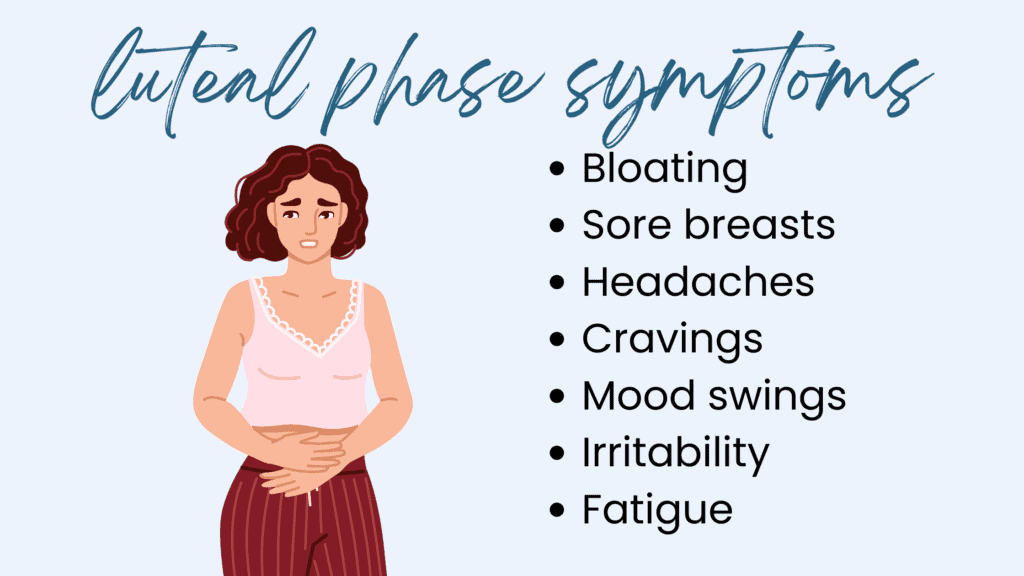
Follicular Phase vs. Luteal Phase
The menstrual cycle consists of two main phases: the follicular and luteal phases. These phases are essential components of menstrual cycles, with the follicular phase being the first part of the cycle, starting on the first day of your period and lasting until ovulation.
During this phase, the follicles in your ovaries mature and get ready to release an egg.
After ovulation, the luteal phase begins. This stage lasts until the beginning of your next menstrual period.
During this phase:
- The ruptured follicle in the ovary turns into the corpus luteum
- The corpus luteum produces progesterone to get your uterus ready for a potential pregnancy
- If you don’t get pregnant, the corpus luteum breaks down
- Your period begins again
Understanding the differences between the follicular and luteal phases can help you track your menstrual cycle more accurately, optimize your fertility window, and identify any potential issues related to your luteal phase length or hormonal balance.

Common Luteal Phase Symptoms
Luteal phase symptoms, or premenstrual syndrome (PMS), can manifest as physical and emotional changes due to fluctuating hormone levels. These symptoms can include:
- Bloating
- Sore breasts
- Headaches
- Cravings
- Mood swings
- Irritability
- Fatigue
We will examine these physical and emotional symptoms and their impact on our daily lives.
Physical Symptoms
Physical symptoms of the luteal phase may include:
- Bloating: a feeling of fullness or tightness in the abdomen
- Breast tenderness: your breasts might feel sore or sensitive
- Headaches: ranging from mild to severe
- Food cravings: you might find yourself craving sweet, salty, or savory foods
These physical symptoms can be uncomfortable and even disruptive to your daily life. However, understanding the root cause of these symptoms and their connection to the luteal phase can help you manage them more effectively and seek appropriate treatment options.
Emotional Symptoms
Emotional symptoms during the luteal phase can involve:
- Mood swings
- Irritability
- Fatigue
- Anxiety
- Stress
- Feeling upset or tearful
- Low energy
- Lack of interest in activities you usually enjoy
These are some of the emotional symptoms you might experience during this phase of your cycle.
Recognizing and acknowledging these emotional symptoms is key, given their potential impact on your mental health and relationships. By understanding that these symptoms are a normal part of the luteal phase, you can develop coping strategies and seek support from friends, family, or healthcare professionals when needed.
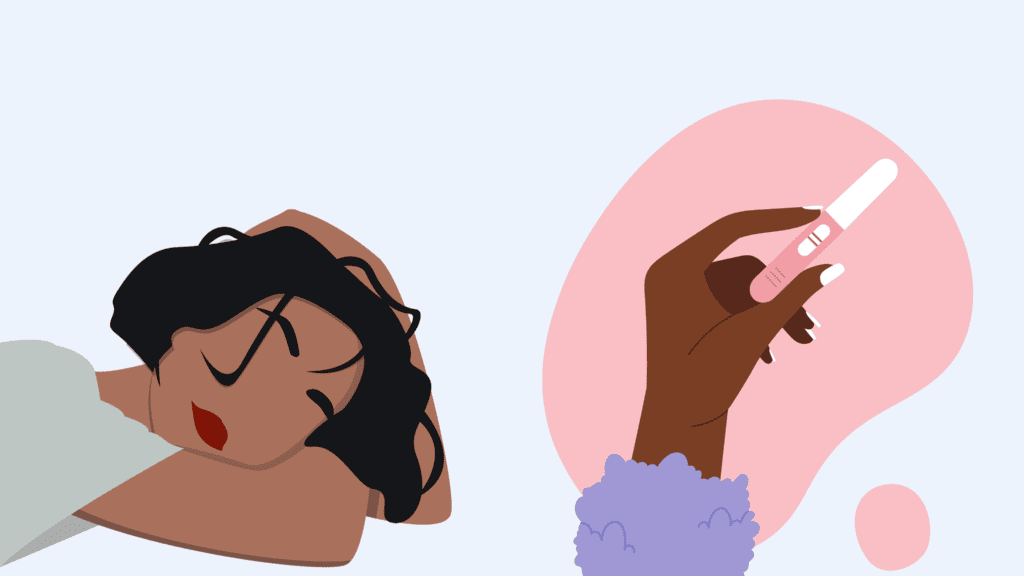
Identifying Luteal Phase Defects
Luteal Phase Defects (LPD) can affect fertility and overall health, with potential causes including insufficient progesterone production or abnormal endometrial response, which may be related to luteal phase deficiency.
LPD can prevent the uterus lining from thickening correctly, making it hard for a fertilized egg to develop and implant. Identifying and addressing LPD can be crucial for those trying to conceive or experiencing fertility issues.
Causes of Luteal Phase Defects
Causes of LPD may involve:
- Lifestyle factors such as stress, an unhealthy diet, lack of exercise, and excessive alcohol consumption
- Hormonal imbalances like low progesterone, high estrogen, and thyroid issues
- Underlying medical conditions such as Polycystic Ovary Syndrome (PCOS), endometriosis, and uterine fibroids
Comprehending the potential causes of LPD aids in determining the most appropriate course of action to tackle the issue. Seeking professional medical advice can help identify the root cause of LPD and establish a tailored treatment plan to improve fertility and overall health.
Impact on Fertility
LPD can impact fertility by causing irregular cycles, early periods, or insufficient uterine lining development. It has been linked to infertility and early miscarriages, making it a critical factor to consider when trying to conceive. Treatment options for luteal phase defects include hormonal therapy, lifestyle changes, and addressing any underlying medical conditions.
Identifying and addressing LPD can enhance your chances of conception and maintaining a healthy pregnancy. Monitoring your menstrual cycle, tracking your luteal phase, and seeking professional medical advice are crucial steps in managing LPD and its impact on fertility.

Tracking Your Luteal Phase
Tracking your luteal phase can help identify its length and potential issues using methods such as basal body temperature tracking and ovulation predictor kits. By monitoring your luteal phase, you can gain insights into your hormonal balance, fertility window, and overall reproductive health.
We will discuss these methods comprehensively and understand their efficacy in tracking your luteal phase.
Basal Body Temperature Tracking
Basal body temperature tracking involves measuring your temperature daily to identify the slight increase during the luteal phase. To track your BBT, follow these steps:
- Take your temperature first thing in the morning before leaving bed.
- Use a digital thermometer to get an accurate reading.
- Record the results in a chart or app.
- Your temperatures help figure out the post-ovulatory window and optimize fertility.
The benefits of tracking your BBT include:
- Identifying when you’re ovulating
- Recognizing when your luteal phase starts
- Helping you better understand your menstrual cycle and plan for conception
- Spotting any irregularities in your cycle, which could be a sign of a luteal phase defect or an underlying hormonal imbalance.
Ovulation Predictor Kits
Ovulation predictor kits detect the surge in luteinizing hormone (LH) that precedes ovulation, helping to determine the start of the luteal phase. These kits measure the levels of LH in your urine, and when the LH levels go up, it means you’re about to ovulate.
Using ovulation predictor kits can help you figure out when ovulation is coming up so you can time intercourse better and increase your chances of getting pregnant.
However, ovulation predictor kits aren’t always accurate and can give false positive results. Plus, they can be expensive and require frequent testing.
Combining BBT tracking with ovulation predictor kits can provide a more comprehensive view of your luteal phase and help you make informed decisions about your fertility.
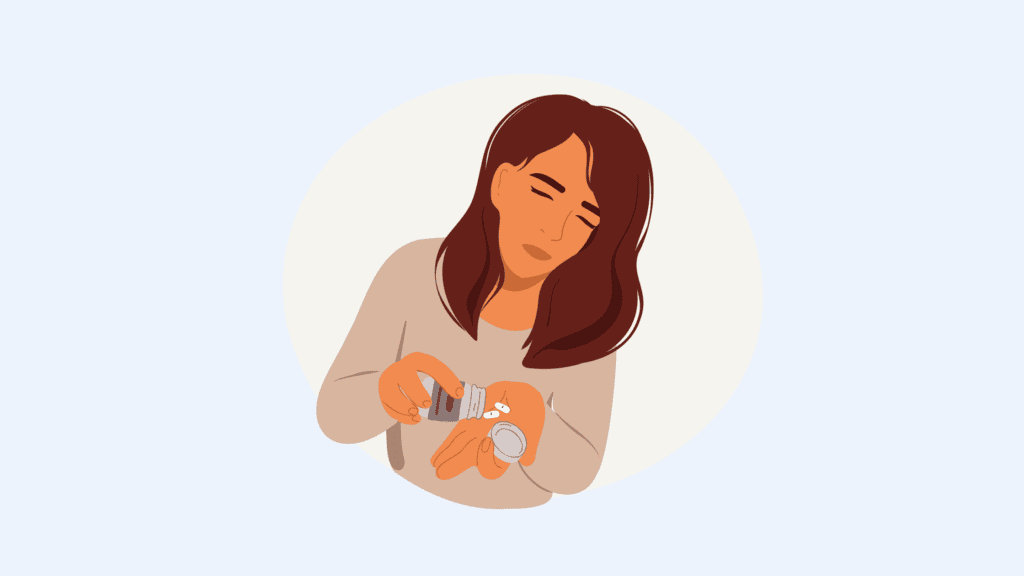
Managing Luteal Phase Symptoms
Managing luteal phase symptoms can involve lifestyle changes and various treatment options to alleviate discomfort and optimize overall health.
Addressing the root cause of these symptoms and implementing suitable strategies can enhance your quality of life and maintain your hormonal balance.
Lifestyle Changes
Lifestyle changes to manage luteal phase symptoms may include:
- Following a balanced diet
- Regular exercise
- Stress reduction
- Avoiding high-carb foods
Ensuring a healthy diet, staying hydrated, and considering targeted supplements can help alleviate physical and emotional symptoms during the luteal phase.
Additionally, managing stress through relaxation techniques, getting enough sleep, and tracking your symptoms can provide valuable insights into your luteal phase and its impact on your overall well-being.
For personalized advice and guidance, it’s essential to consult with a healthcare professional who can help tailor a plan that works best for your individual needs.
Treatment Options
Treatment options for luteal phase symptoms can range from over-the-counter medications to prescription treatments, depending on the severity of symptoms.
Over-the-counter medications such as ibuprofen, acetaminophen, and naproxen can help treat mild to moderate luteal phase symptoms. Antihistamines and decongestants can also be used to treat luteal phase symptoms.
For more severe luteal phase symptoms, prescription treatments like:
- hormonal birth control
- progesterone supplements
- antidepressants
- hormone replacement therapy
- anti-anxiety medications
Consulting with a healthcare professional is recommended to determine the most suitable treatment options for your particular needs and symptoms.
Luteal Phase and Pregnancy
The luteal phase plays a significant role in fertility and early pregnancy detection, with its length and hormonal balance being crucial factors. Understanding your luteal phase can help you identify potential fertility issues and optimize your chances of conceiving.
Furthermore, monitoring luteal phase symptoms and hormone levels can aid in early pregnancy detection, allowing for timely prenatal care and support.
Fertility and the Luteal Phase
Understanding your luteal phase can help identify potential fertility issues and optimize your chances of conceiving. Insufficient progesterone production, for example, can prevent the uterus lining from thickening up properly, making it difficult for a fertilized egg to develop and implant.
Treatment options for luteal phase defects include hormonal therapy, lifestyle changes, and addressing any underlying medical conditions. Identifying and addressing LPD can be crucial for those trying to conceive or experiencing fertility issues.
Early Pregnancy Detection
Monitoring luteal phase symptoms and hormone levels can aid in early pregnancy detection. By keeping track of your luteal phase, you can gain insights into your hormonal balance, fertility window, and overall reproductive health. This can help you identify early signs of pregnancy and seek prenatal care and support as soon as possible.
Confirming early pregnancy detection with a pregnancy test or consulting a healthcare professional is recommended. This ensures that you receive the right results and timely prenatal care and support.
Summary
In conclusion, understanding the luteal phase is essential to knowing your body and optimizing your overall reproductive health. From recognizing common luteal phase symptoms to managing them effectively, tracking your menstrual cycle, and identifying potential fertility issues, you can control your menstrual health. Embrace this knowledge and work in harmony with your body to achieve the best possible outcomes for your fertility and overall well-being.
Frequently Asked Questions
What should you avoid during the luteal phase?
To maintain balanced blood sugar and reduce menstrual cramps during the luteal phase, it’s best to avoid caffeine, alcohol, refined carbs, high-sugar foods, excess salt, dairy, and carbonated drinks.
What are signs of luteal phase defect?
Signs of luteal phase defect may include spotting between periods, shortened menstrual cycles, difficulty conceiving, miscarriages, bloating, headaches, breast swelling/pain/tenderness, mood changes, and weight gain.
Does luteal phase make you tired?
The luteal phase can lead to a decrease in energy and low mood due to rising progesterone levels. Women tend to experience more fatigue during this phase of the menstrual cycle than men. So, yes, the luteal phase can make you tired.
What is the luteal phase?
The luteal phase is the second half of the menstrual cycle, providing a window for potential pregnancy by thickening the uterine lining and maintaining hormone levels.
What are common luteal phase symptoms?
Common luteal phase symptoms include physical issues like bloating, sore breasts, headaches and emotional ones such as mood swings, irritability, and fatigue.

Octavia Steen is an NBDA certified fertility doula, health coach, certified fitness nutrition specialist, aspiring missionary with the COGIC, and owner of Mother Mindset. She helps future and current mamas become more consistent in faith + fitness and grow closer to God so they can create a healthier lifestyle from the inside out!


